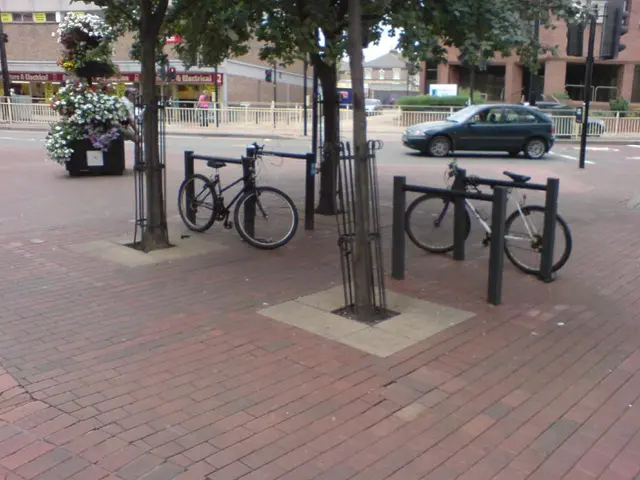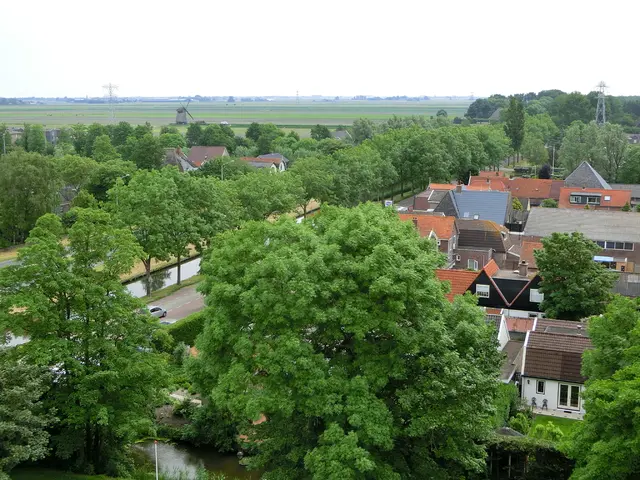Navigating Home Purchases Wisely: Evaluate the Construction Era to Avoid Surprises
When Purchasing Real Estate, Give Thought to the Construction Year
When seeking a used property, it's crucial to consider the building's construction era. Each period has its unique characteristics, potential problems, and associated costs that may catch unwary buyers off guard.
From the charm of Gründerzeit houses to the classic Bauhaus bungalows, the allure of distinctive architectural styles often overshadows the realistic expectations of the renovation work that may be required. Below, we'll delve into some key insights about the common issues and costs associated with properties built during various historical periods.
Gründerzeit Period (Late 19th Century)
- Aesthetic Concerns: Buildings of this era are known for their grandeur, heavy masonry walls, wooden beams, and intricate plasterwork. However, this ornate design can lead to structural problems such as crumbling brickwork, deteriorating woodwork due to pests or rot, and leaks in old roofing systems.
- Renovation Costs: Bringing these historical gems up-to-date can prove pricey. The restoration costs range from €500 to €1,500 per square meter, depending on the extent of the renovation required.
Early 20th Century (e.g., Wilhelminian Era)
- Structural Issues: Buildings share similarities with Gründerzeit properties, featuring large ornate elements like plasterwork and wood paneling. Common issues include water damage, peeling plaster, and outdated heating systems.
- Renovation Costs: The expenses for restoring these homes can be high due to the need to preserve original details while updating the infrastructure. Typical costs are €400 to €1,200 per square meter.
Mid-20th Century (Post-War Period)
- Structural Issues: Homes from this era have simpler designs with less elaborate details. Common issues include asbestos in ceilings and walls, inadequate insulation, and outdated electrical and plumbing systems.
- Renovation Costs: Removing asbestos and addressing deficiencies in insulation and major systems can result in costs ranging from €200 to €800 per square meter.
Late 20th Century to Early 21st Century (1980s-1990s)
- Structural Issues: These properties might have more modern materials, but they can still suffer from poor insulation, outdated windows, and low-quality construction techniques.
- Renovation Costs: Upgrading insulation, windows, and energy systems can be costly. Renovation expenses typically range from €150 to €500 per square meter.
Houses Built After 2000
- Structural Issues: Homes built more recently tend to have fewer issues. However, problems may arise from low-quality materials or design flaws, such as poor insulation or drainage problems.
- Renovation Costs: Lower compared to older homes. Costs may vary from €50 to €200 per square meter for cosmetic updates and minor repairs, but can escalate if significant structural issues are identified.
In conclusion, older properties often demand more extensive and expensive renovations to address structural decay and update systems, while newer homes usually require less invasive updates. Factors such as material quality, design, and local building standards play a crucial role in renovation costs and challenges. It's always best to consult an independent expert to assess the potential issues and financial implications before making a purchase.
When navigating home purchases, understanding the construction era is essential to avoid surprises. Gründerzeit houses, built in the late 19th century, offer grandeur but can conceal issues like crumbling brickwork, deteriorating woodwork, and leaks. Restoring these homes can cost from €500 to €1,500 per square meter.
Similarly, buildings from the early 20th Century, such as those from the Wilhelminian Era, may exhibit water damage, peeling plaster, and outdated heating systems. Renovation costs for these homes range from €400 to €1,200 per square meter.
The post-War period homes, though simpler in design, may contain asbestos, inadequate insulation, and outdated electrical and plumbing systems. Removing asbestos and addressing deficiencies can cost from €200 to €800 per square meter.
Homes from the 1980s-1990s might have issues with poor insulation, outdated windows, and low-quality construction techniques. Upgrading insulation, windows, and energy systems can cost from €150 to €500 per square meter.
While houses built after 2000 tend to have fewer issues, they may still suffer from poor insulation or drainage problems, requiring costs ranging from €50 to €200 per square meter for cosmetic updates and minor repairs. However, significant structural issues can escalate costs.
Consulting an independent expert is always recommended to assess potential issues and financial implications before making a purchase. This includes evaluating community and employment policies, as they can impact lifestyle, finance, personal-finance, housing-market, real-estate, and home-and-garden investing.







